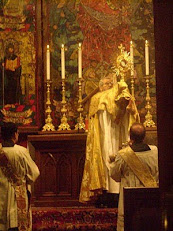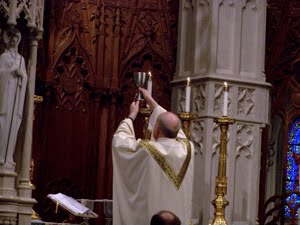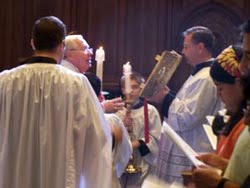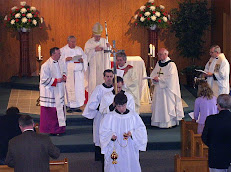On the heels of his excellent essay “United in Communion, but not Absorbed: Understanding the Pope’s Welcome,” Bishop Elliott has hit another home run with the following address delivered earlier today in Melbourne. My emphases in bold and comments in blue.
* * *
WHAT IS THIS “PERSONAL ORDINARIATE”?
Bishop Peter J. Elliott, Auxiliary Bishop of Melbourne, on Understanding Pope Benedict’s Offer to Traditional Anglicans
An address given to Forward in Faith Australia at All Saints’, Kooyong, Melbourne, on Saturday, February 13th 2010.
Anglicans can no longer speak of “swimming the Tiber”. Pope Benedict XVI has built a noble bridge, a symbol chosen as the cover illustration for the Catholic Truth Society edition of his Constitution Anglicanorum coetibus. Today I want to try to describe where that bridge leads...
read the rest at The Anglo-Catholic blog.
Sir Thomas ... and three centuries later (2)
-
So Thomas Blackburn iniquitously secreted away alabaster tablets within
Ripon church; subsequently, he denied having removed them from the church!
Which, o...
20 hours ago











More news here:
ReplyDeletehttp://www.forwardinfaith.com/artman/publish/article_501.shtml
Something like a "Friends of the Ordinariate"organization is what we could all do with as some of us prepare to join it.